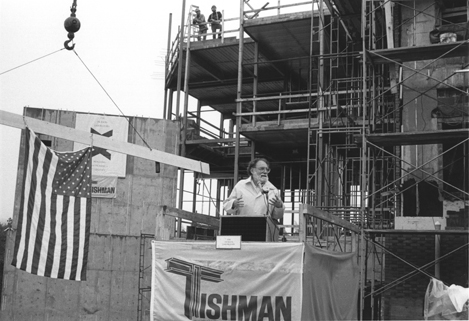
Faculty Research 1990 - 1999
Deficiency of SHP-1 protein-tyrosine phosphatase activity results in heightened osteoclast function and decreased bone density.
Document Type
Article
Publication Date
1999
Keywords
Blotting-Western, Bone-Density: ph, Bone-Marrow-Cells: cy, Cell-Division: ph, Coculture, Dentin: pa, Femur: ra, pa, Homozygote, In-Vitro, Mice, Mice-Inbred-C57BL, Mice-Mutant-Strains, Mutation: ph, Osteoblasts: cy, Osteoclasts: ph, pa, Protein-Tyrosine-Phosphatase: ge, df, SUPPORT-U-S-GOVT-P-H-S, Tomography
First Page
223
Last Page
233
JAX Source
Am J Pathol 1999 Jul;155(1):223-33
Grant
CA20408/CA/NCI, AR43618/AR/NIAMS, CA79891/CA/NCI
Abstract
Mice homozygous for the motheaten (Hcphme) or viable motheaten (Hcphme-v) mutations are deficient in functional SHP-1 protein-tyrosine phosphatase and show severe defects in hematopoiesis. Comparison of femurs from mev/mev mice revealed significant decreases in bone mineral density (0.33 +/- 0.03 mg/mm3 for mev/mevversus 0.41 +/- 0.01 mg/mm3 for controls) and mineral content (1.97 +/- 0.36 mg for mev/mevversus 10.64 +/- 0.67 for controls) compared with littermate controls. Viable motheaten mice also showed reduced amounts of trabecular bone and decreased cortical thickness. These bone abnormalities were associated with a 14% increase in numbers of multinucleated osteoclasts and an increase in osteoclast resorption activity. In co-cultures of normal osteoblasts with mutant or control bone marrow cells, numbers of osteoclasts developing from mutant mice were increased compared with littermate control mice. Although mev/mev osteoclasts develop in the absence of colony-stimulating factor (CSF)-1, nevertheless cultured osteoclasts show increased size in the presence of CSF-1. CSF-1-deficient osteopetrosis (op/op) mutant mice develop severe osteosclerosis. However, doubly homozygous mev/mevop/op mice show an expansion of bone marrow cavities and reduced trabecular bone mass compared with op/op mice. Western blot analysis showed that several proteins that were markedly hyperphosphorylated on tyrosine residues were detected in the motheaten osteoclasts, including a novel 126-kd phosphotyrosine protein. The marked hyperphosphorylation of a 126-kd protein in motheaten osteoclasts suggests that this protein depends on SHP-1 for dephosphorylation. These findings demonstrate that the decreased SHP-1 catalytic activity in me/me and mev/mev mice results in an increased population of activated osteoclasts and consequent reduction in bone density.
Recommended Citation
Umeda S,
Beamer WG,
Takagi K,
Naito M,
Hayashi S,
Yonemitsu H,
Yi T,
Shultz LD.
Deficiency of SHP-1 protein-tyrosine phosphatase activity results in heightened osteoclast function and decreased bone density. Am J Pathol 1999 Jul;155(1):223-33

